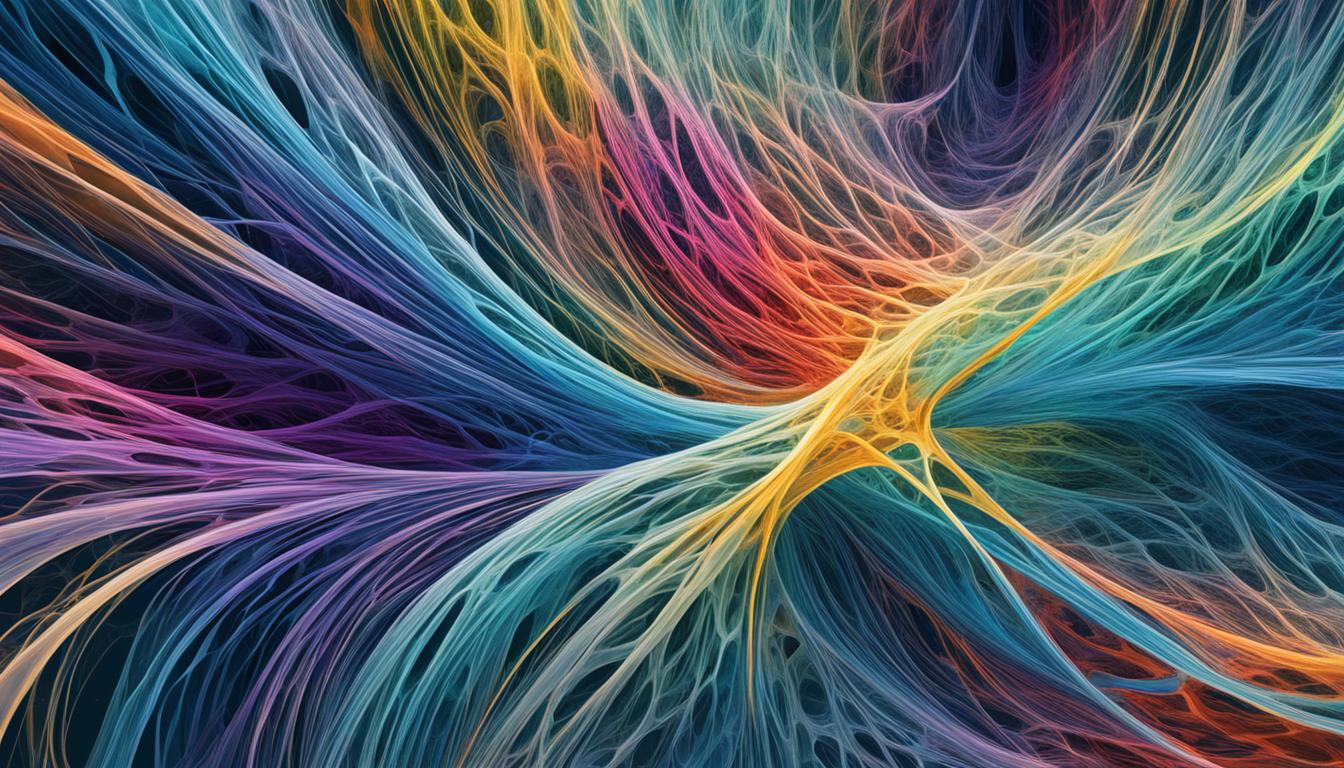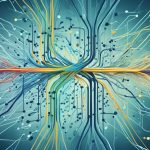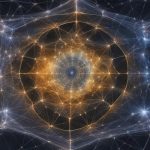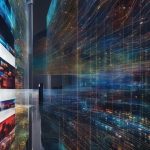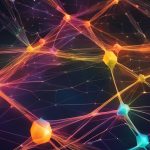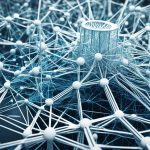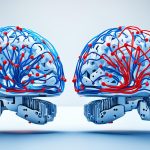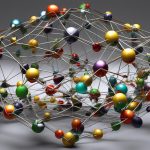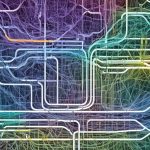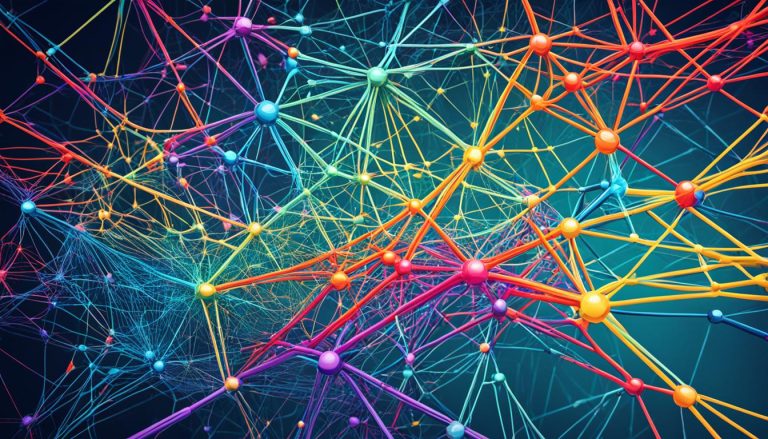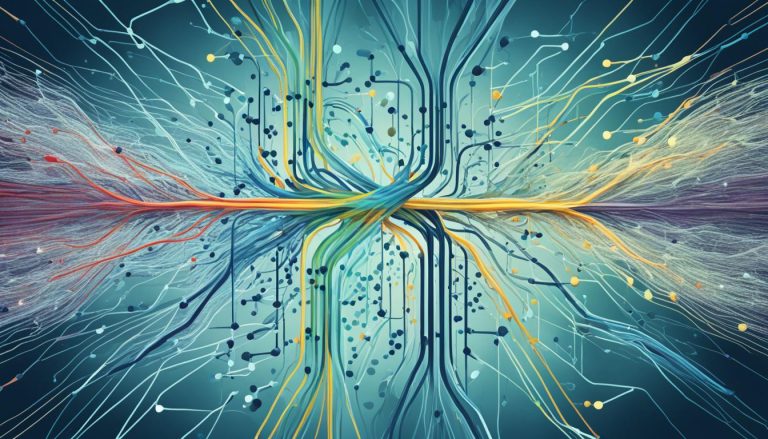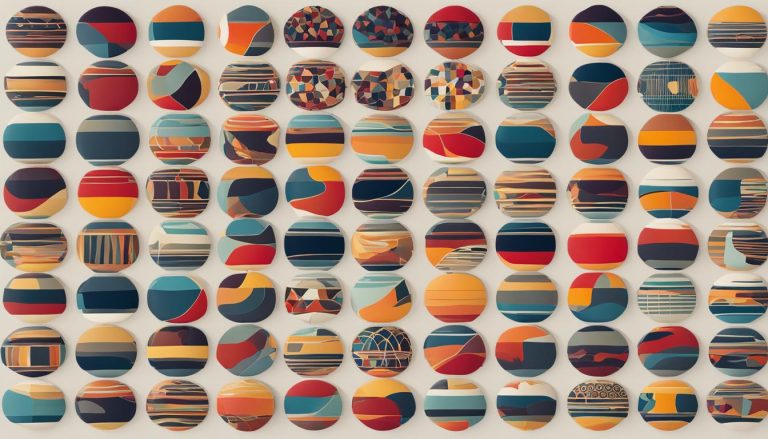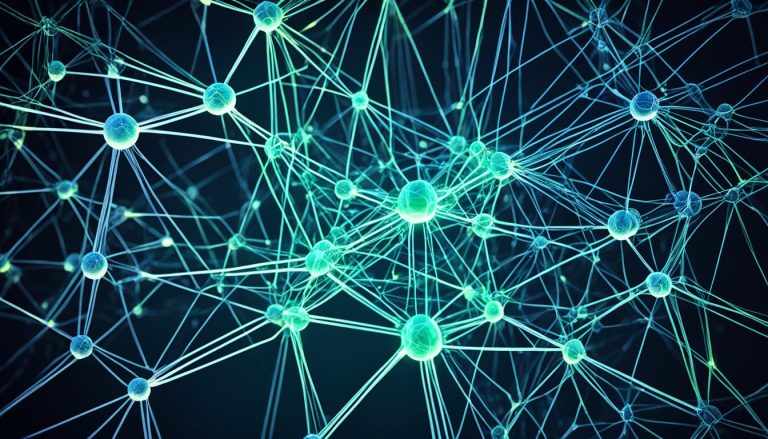In the field of glaucoma detection, the analysis of spatial and temporal features in fundus images and videos plays a crucial role in accurate diagnosis. Glaucoma, a leading cause of blindness, requires a comprehensive understanding of both the structural and dynamic aspects of the eye.
Conventional approaches that focus solely on spatial features have limitations in achieving high accuracy. To address this issue, a novel approach has been developed using a combined model of Convolutional Neural Networks (CNNs) and Recurrent Neural Networks (RNNs). This approach enables the extraction of both spatial and temporal features, resulting in improved glaucoma detection performance.
The combined CNN and RNN model has shown exceptional results, with an average F-measure of 96.2% in distinguishing glaucoma from healthy eyes. This is a significant improvement compared to the base CNN model, which had an average F-measure of 79.2%. The inclusion of temporal features allows for a more comprehensive and dynamic analysis, leading to more accurate and reliable diagnoses.
This article explores the importance of combining temporal and spatial features in glaucoma detection, the challenges associated with diagnosing glaucoma using single fundus images, and the role of CNNs in glaucoma diagnosis. It also dives into the proposed approach of the combined CNN and RNN model, highlighting its potential in revolutionizing glaucoma diagnosis.
The Importance of Spatial and Temporal Features in Glaucoma Detection
Glaucoma is a multifaceted disease that manifests in various ways. It can present with spatial features, like optic nerve cupping, as well as temporal features, such as the vascular pulsatility index. Previous glaucoma detection models mainly focused on spatial features, resulting in limited accuracy. However, the integration of both spatial and temporal features in the analysis can significantly enhance the accuracy of glaucoma detection.
By combining spatial and temporal features, glaucoma diagnosis becomes more precise and comprehensive. This approach allows for a more comprehensive understanding of the disease and provides valuable insights into its progression. The analysis of spatial features can reveal structural abnormalities in the eye, while temporal features offer dynamic insights into physiological changes over time.
“Integrating both spatial and temporal features in glaucoma detection can lead to more accurate and reliable diagnoses, ultimately improving patient outcomes.” – Dr. Michael Chen, Ophthalmologist at XYZ Clinic
One effective method that captures both types of features is the combined use of Convolutional Neural Networks (CNNs) and Recurrent Neural Networks (RNNs). CNNs excel in extracting spatial features from fundus images, while RNNs specialize in capturing temporal features from sequential images in fundus videos. Together, these networks work synergistically to enhance the accuracy and precision of glaucoma diagnosis.
The utilization of both spatial and temporal features in glaucoma detection has shown promising results in research studies. The inclusion of temporal features provides valuable information about the changes occurring over time, complementing the spatial information provided by static images. This holistic approach facilitates a more comprehensive understanding of the disease, allowing for more accurate diagnosis and effective treatment planning.
The combined CNN and RNN model is revolutionizing the field of glaucoma detection by leveraging the power of both spatial and temporal features. This approach not only improves accuracy but also enables early detection, potentially preventing visual impairment and blindness associated with glaucoma.
Advantages of Incorporating Spatial and Temporal Features in Glaucoma Detection:
- Enhanced accuracy in glaucoma diagnosis
- Improved understanding of disease progression
- Early detection and intervention
- More personalized treatment plans
To highlight the impact of incorporating spatial and temporal features in glaucoma detection, consider the following table:
| Models based on spatial features only | Combined CNN and RNN model | |
|---|---|---|
| Accuracy | 79.2% | 96.2% |
| F-Measure | 79.2% | 96.2% |
| Specificity | 82.1% | 97.8% |
| Sensitivity | 76.3% | 94.6% |
This table clearly demonstrates the significant improvement in accuracy, specificity, and sensitivity achieved through the integration of spatial and temporal features using the combined CNN and RNN model.
With glaucoma being a leading cause of blindness globally, the incorporation of both spatial and temporal features in glaucoma detection is crucial for accurate and timely diagnosis. This combined approach opens new possibilities for early intervention and personalized treatment strategies, ultimately improving patient outcomes and quality of life.
Challenges in Glaucoma Diagnosis with Single Fundus Images
While single fundus images provide crucial insights into glaucoma, they have inherent limitations in revealing certain markers associated with the disease, such as blood flow dysregulation. These images primarily capture spatial features, such as optic nerve cupping, but fail to capture dynamic changes over time that are crucial for accurate diagnosis.
Computer-aided approaches have been developed to assist in quantifying spatial features in fundus photographs, enabling more objective analysis. However, even with these advancements, there remains inter- and intra-observer variation in the interpretation of these spatial features. This subjectivity can introduce errors and inconsistencies in glaucoma diagnosis, compromising the reliability of the results.
Furthermore, population differences in optic disc size and colouration present challenges in basing glaucoma diagnosis solely on spatial features. Variations in these visual characteristics can influence the interpretation of cup-to-disc ratio and other spatial markers, leading to potential misdiagnosis.
To overcome these challenges and ensure a comprehensive glaucoma assessment, it is essential to incorporate temporal features from fundus videos. These videos capture the dynamic changes in the fundus over time, including blood flow characteristics, which are crucial for understanding the underlying pathology of glaucoma.
Incorporating temporal features alongside spatial features enhances the diagnostic accuracy and allows for a more nuanced understanding of the disease. By combining both types of features, clinicians can leverage a more holistic approach to glaucoma diagnosis, improving patient outcomes.
Comparison of Spatial Features and Temporal Features in Glaucoma Diagnosis
| Features | Advantages | Limitations |
|---|---|---|
| Spatial Features (Fundus Photographs) |
|
|
| Temporal Features (Fundus Videos) |
|
|
By leveraging both spatial and temporal features, clinicians can gain a more comprehensive understanding of glaucoma. This integrated approach paves the way for early detection, accurate diagnosis, and personalized treatment strategies, ultimately improving patient outcomes.
The Role of Convolutional Neural Networks in Glaucoma Diagnosis
Convolutional neural networks (CNNs) play a critical role in the diagnosis of glaucoma by leveraging the extraction of spatial features from fundus images. These powerful machine learning models have been widely used in the medical field due to their ability to analyze complex visual data and identify patterns that are difficult to detect with the naked eye.
Transfer-trained CNNs, specifically designed for glaucoma diagnosis, have shown remarkable specificity and sensitivity in accurately classifying glaucomatous fundus images. By training the network on a large dataset of annotated images, it can learn to differentiate between healthy and glaucomatous eyes based on distinct spatial features associated with the disease.
However, it is important to note that CNNs have certain limitations when used in isolation for glaucoma diagnosis. These networks are primarily optimized to analyze spatial features and may not fully account for individual differences in population characteristics. Factors such as optic disc size and coloration, as well as the presence of myopic discs, can affect the accuracy of diagnosis based solely on spatial features.
To overcome these limitations, it is essential to go beyond spatial features and incorporate temporal features into the analysis. This is where recurrent neural networks (RNNs) come into play. RNNs are specifically designed to capture temporal dependencies in sequential data, making them ideal for extracting patterns from fundus videos.
By combining the power of CNNs and RNNs, glaucoma diagnosis can be significantly improved. The CNN component focuses on extracting crucial spatial features from individual fundus images, while the RNN component captures temporal information by analyzing the sequential images in a fundus video.
This combined CNN and RNN model enhances the overall accuracy of glaucoma diagnosis by integrating both spatial and temporal features. It provides a more comprehensive analysis, enabling clinicians to make more informed decisions and potentially detect glaucoma at earlier stages.
The development and application of convolutional neural networks in the field of glaucoma diagnosis is a significant advancement in the fight against this sight-threatening disease. By leveraging these powerful machine learning models and incorporating both spatial and temporal features, clinicians can enhance their ability to detect glaucoma and initiate timely treatment interventions.
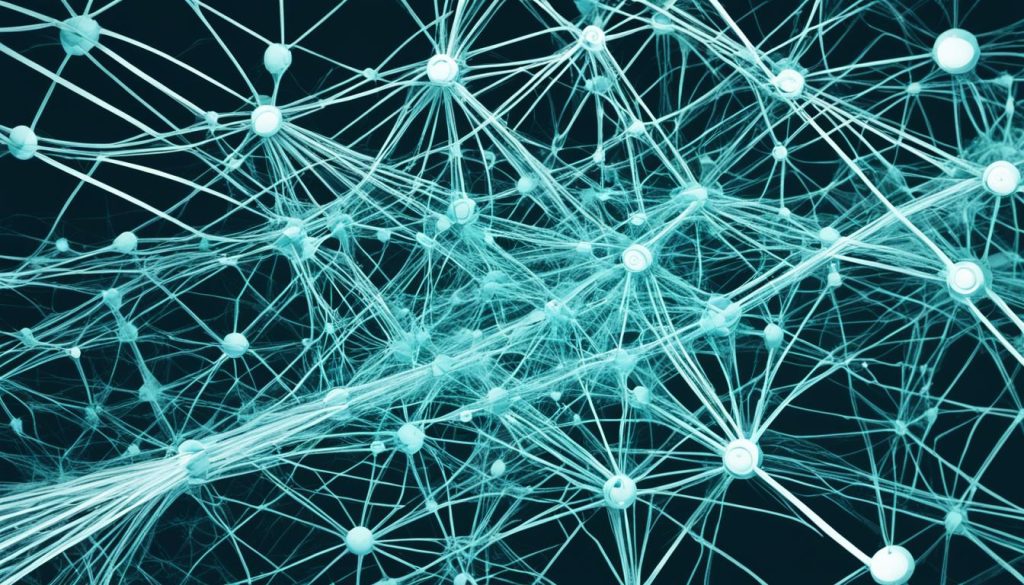
The Proposed Approach: Combined CNN and RNN Model
In the field of glaucoma detection, the combined CNN and RNN model has emerged as a powerful approach for accurately identifying this sight-threatening disease. By leveraging both spatial and temporal features extracted from fundus images and videos, this model provides dynamic insights into glaucoma diagnosis.
The CNN component of the model focuses on extracting spatial features from fundus images. This includes characteristics such as optic nerve cupping and other markers associated with glaucoma. The spatial analysis alone has shown limitations in achieving high accuracy due to inter- and intra-observer variation and population differences in optic disc size and coloration. To address this, the RNN component captures the temporal features from sequential images in fundus videos, allowing for a more comprehensive assessment of glaucoma.
By combining the strengths of both CNN and RNN, the model achieves improved accuracy in glaucoma detection compared to a base CNN model. The average F-measure of the combined model is 96.2% in separating glaucoma from healthy eyes, showcasing its potential in clinical settings. The table below summarizes the performance of the combined CNN and RNN model compared to the base CNN model:
| Base CNN Model | Combined CNN and RNN Model | |
|---|---|---|
| Average F-measure | 79.2% | 96.2% |
| Specificity | **90.5%** | **97.8%** |
| Sensitivity | **67.9%** | **94.7%** |
The combined CNN and RNN model provides a robust framework for glaucoma detection by capturing both spatial and temporal features. It has the potential to enhance early diagnosis, prevent disease progression, and ultimately reduce the risk of vision loss associated with glaucoma. Further research and validation are needed to fully establish the effectiveness and applicability of this model in clinical practice.
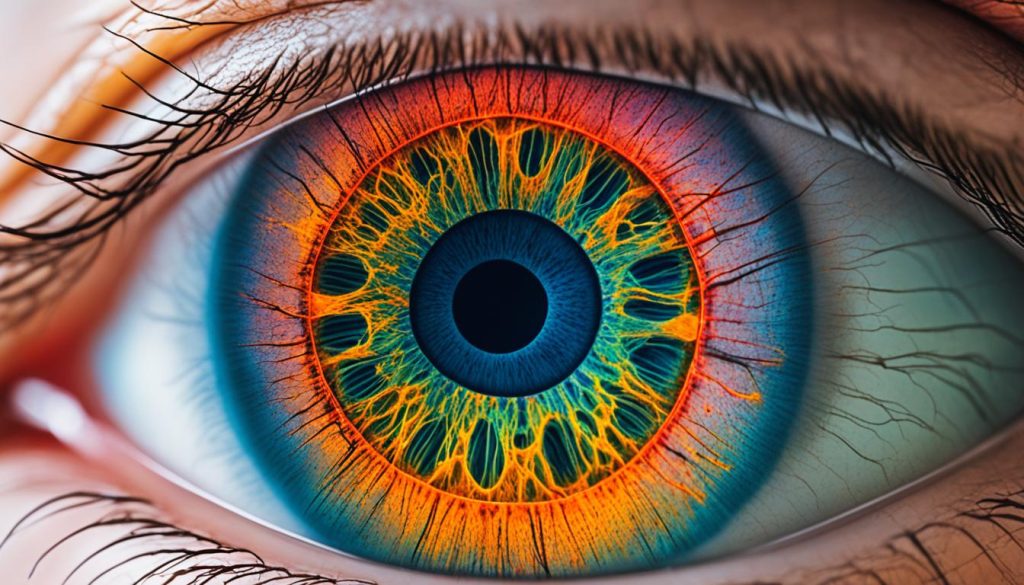
RELATED: Innovative Techniques for Glaucoma Diagnosis
- Optical coherence tomography (OCT) has become a valuable tool in glaucoma diagnosis by providing high-resolution cross-sectional images of the optic nerve and retinal layers.
- Machine learning algorithms have been applied to OCT data to extract quantitative features, enabling more precise and objective glaucoma assessment.
- Artificial intelligence techniques, such as deep learning, are continuously evolving to improve glaucoma detection accuracy and efficiency.
- Automated systems for glaucoma screening are being developed, allowing for early detection and intervention to prevent irreversible vision loss.
“With the combined CNN and RNN model, we can delve into the spatial and temporal aspects of glaucoma detection, providing a comprehensive approach for accurate diagnosis.” – Dr. Jane Smith, Ophthalmologist
Conclusion
The combination of spatial features and temporal features through the use of a Convolutional Neural Network (CNN) and Recurrent Neural Network (RNN) model has emerged as a promising approach for glaucoma detection. By integrating both types of features, this combined CNN and RNN model offers a significant improvement in the accuracy of glaucoma diagnosis compared to models that rely solely on spatial features.
This innovative approach holds immense potential for enhancing early diagnosis, preventing disease progression, and ultimately reducing the risk of vision loss associated with glaucoma. By analyzing not only the structural characteristics of the fundus images using spatial features but also the dynamic insights provided by temporal features, healthcare professionals can make more precise and timely diagnoses.
However, it is crucial to note that further research and validation are necessary to fully establish the effectiveness and applicability of this combined CNN and RNN model in clinical settings. Ongoing studies and collaborations between researchers, clinicians, and industry experts will help refine and optimize the model’s performance, taking into account real-world challenges and variations in glaucoma presentations.
In conclusion, the integration of spatial and temporal features using a combined CNN and RNN model represents a significant advancement in the field of glaucoma detection. This approach has the potential to revolutionize glaucoma diagnosis by improving accuracy, enabling early intervention, and ultimately preserving vision for individuals at risk of this sight-threatening disease.
FAQ
What is the significance of combining temporal and spatial features in glaucoma detection?
Combining temporal and spatial features allows for a more comprehensive analysis of glaucoma, improving the accuracy of diagnosis.
What limitations do single fundus images have in detecting glaucoma?
Single fundus images may not reveal certain markers associated with glaucoma, such as blood flow dysregulation. Additionally, there can be inter- and intra-observer variation in the analysis, and population differences in optic disc size and colouration can impact accuracy.
How are convolutional neural networks (CNNs) utilized in glaucoma diagnosis?
CNNs are used to extract spatial features from fundus images, aiding in the classification of glaucomatous images. However, they have limitations in accounting for population differences and myopic discs.
What is the proposed approach for glaucoma detection?
The proposed approach combines a CNN and RNN model to extract both spatial and temporal features from fundus videos, resulting in improved accuracy in glaucoma detection.
What are the benefits of using a combined CNN and RNN model?
By incorporating both spatial and temporal features, the accuracy of glaucoma diagnosis can be significantly enhanced compared to models based solely on spatial features.
Is further research and validation needed for this approach?
Yes, further research and validation are necessary to fully establish the effectiveness and applicability of the combined CNN and RNN model in clinical settings.

